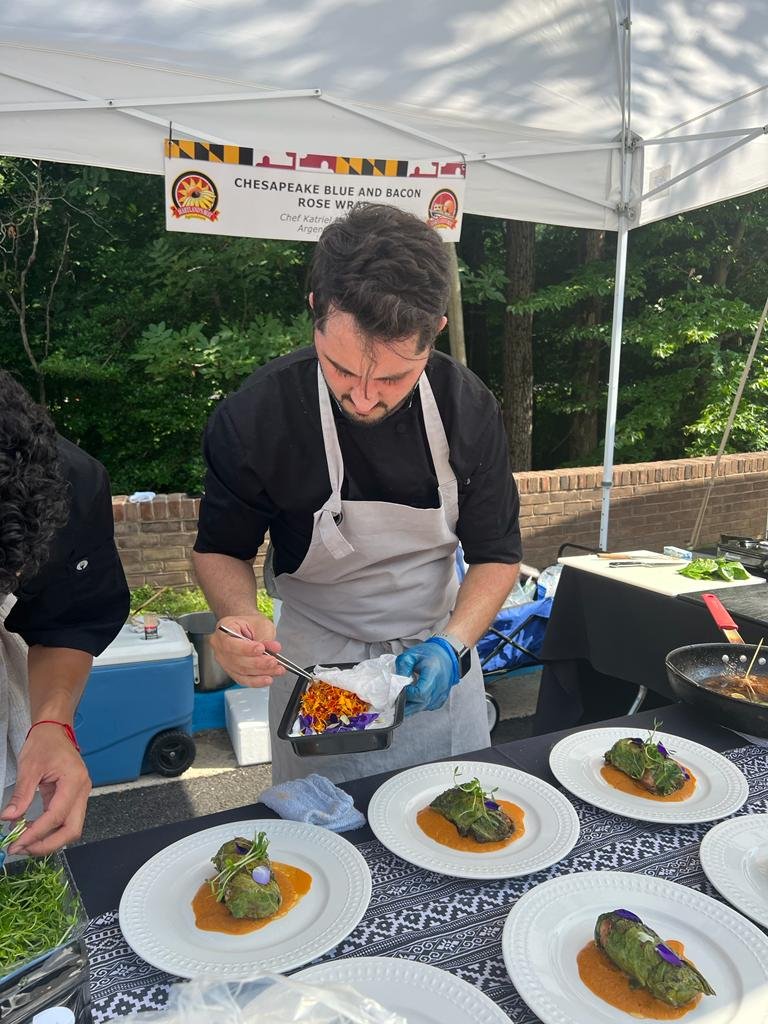Techniques to achieve good plating
One of the arts that a chef or cooking lover should handle, is to put together a dish that is attractive to the eye. To achieve this, it is necessary to follow some steps that will help you to make your dish look like one of haute cuisine, giving it class and elegance so that it is not only its flavor that stands out.
To start the guide, we propose the basic rules of plating and presentation of dishes:
-Define the focal point of the dish: we must pay attention to the location of the elements of the dish. We must create calls to action to highlight what we are interested in.
-The harmony of the dish: balancing is important, the elements of the dish should be arranged so that nothing is missing or over, to achieve this we must work from the combination of ingredients, texture, and flavor.
-Color matters: we must also harmonize the color. A chromatic wheel can serve as a resource to use in the design of the plating. The bet for a monochromatic dish is difficult but visually very powerful.
-The flow of the plate: try to give visual movement to the plate. It is related to the focal point. You can use zigzag compositions, curves, diagonals, triangulations, or elements strategically arranged on the plate.
-Plating looking for height: this is achieved by placing the elements on the plate at different heights, seeking to give volume to the preparation.
-It is advisable to use plating tongs to help give height to leaves, buds, edible flowers, and other ingredients.
-Compose with unity: the different preparations on the plate should not get in the way or subtract from each other. The sum of what is arranged on the plate must have coherence to achieve unity. To achieve this, the focal point must be identifiable and "avoid blank spaces" or empty spaces that distract and detract from the meaning of the dish.
What not to do when plating:
Many times knowing what NOT to do, is more enlightening, and helps us to clear “the x” little by little, of what we should do.
-Never decorate a plate with inedible elements: make sure that your plate never loses its meaning, the diner has no other objective than to eat. If it is not eaten, do not put it on the plate.
-When in doubt, less is more: if you hesitate to put more elements because you do not know if it will be too much, stay with the austere and avoid the baroque.
-Take care of cleanliness and neatness: it is a good option to go over the plate with a clean plate dipped in some white alcohol such as vodka, for example, to remove traces of grease. Always use tongs to plate and try not to leave fingerprints on the plate.
We hope you found these tips helpful. And we want to encourage you to give it a try. We can all give our food dishes a professional and harmonious aesthetic, like the ones we see in restaurants. The secret key: put love and practice a lot. Here is the traditional plating technique, which is the simplest. Now you have no excuses to try!
Traditional plating: you have to divide the dish as if it were a watch. Place the protein at 6 o'clock, the carbohydrate side dish at 2 o'clock, and the vegetable side dish at 10 o'clock. It is a quick and easy plating that leaves all the ingredients in sight.
Did you see how easy it is? Just let your creativity fly, and don't judge yourself, enjoy the try!













